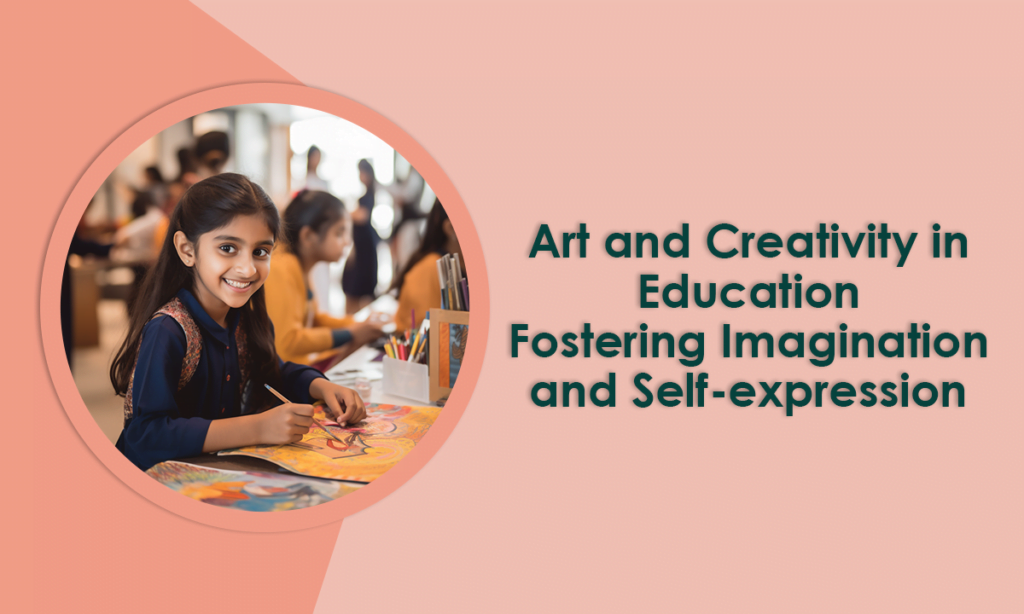Introduction
Education is not just about memorizing facts and figures; it is also about nurturing creativity and fostering a child’s innate curiosity and imagination. Art and creativity play a pivotal role in shaping well-rounded individuals, empowering them to express themselves, think critically, and approach problem-solving with an open mind. From the rich tapestry of India’s cultural heritage to its diverse artistic traditions, this blog post delves into the significance of integrating art and creativity into the education system from the Indian perspective.
The Role of Art and Creativity in Education
Unleashing Imagination: Art encourages children to explore their imagination and think beyond the confines of textbooks. It allows them to envision and create worlds that are not bound by reality, sparking innovation and out-of-the-box thinking.
Building Confidence: Engaging in artistic pursuits boosts a child’s self-confidence as they see their ideas take shape and receive recognition for their creative endeavors.
Developing Problem-solving Skills: Art fosters critical thinking and problem-solving skills, as students encounter challenges and experiment with various techniques to achieve their artistic vision.
Enhancing Emotional Intelligence: Through art, children can express their emotions, thoughts, and experiences, promoting emotional intelligence and empathy.
Preserving Cultural Heritage: Indian art forms, be it classical dance, traditional crafts, or folk music, are an integral part of the country’s cultural heritage. Integrating these art forms in education helps preserve and pass on this rich legacy to future generations.
Challenges in Promoting Art and Creativity in Education
While the importance of art and creativity in education is undeniable, several challenges hinder their integration into the mainstream curriculum:
Emphasis on Academics: In India’s highly competitive education system, there is often a disproportionate focus on academic performance, leaving little room for arts and creative expression.
Lack of Infrastructure and Resources: Many schools, especially in rural areas, lack proper infrastructure and resources to support art education and creative activities.
Teacher Training: Teachers need to be adequately trained to integrate art and creativity into their teaching methodologies effectively.
Parental Pressures: Societal expectations and parental pressures to excel in traditional academic subjects can discourage students from pursuing artistic interests.
Standardized Testing: The emphasis on standardized testing can lead to a narrow definition of success, overshadowing the importance of creativity and self-expression.
Promoting Art and Creativity in Indian Education
To foster a culture of art and creativity in Indian education, the following measures can be implemented:
Curriculum Integration: Art and creative subjects should be integrated into the mainstream curriculum, emphasizing their significance alongside academic subjects.
Teacher Training Programs: Teachers should receive specialized training in art education, enabling them to incorporate creative activities into their lessons effectively.
Artistic Workshops and Events: Schools can organize regular workshops, exhibitions, and cultural events to celebrate art and creativity, encouraging students to participate actively.
Public-Private Partnerships: Collaborations between educational institutions, the government, and private organizations can enhance access to art resources and infrastructure.
Parental Engagement: Educating parents about the importance of art and creativity in their child’s holistic development can garner support for artistic pursuits.
Benefits of Embracing Art and Creativity in Education
Integrating art and creativity into education can yield significant benefits:
Holistic Development: Art nurtures all aspects of a child’s development – cognitive, emotional, social, and physical – leading to well-rounded individuals.
Enhanced Learning: Art enhances learning in other subjects by promoting observation, analysis, and critical thinking skills.
Creative Entrepreneurs: Encouraging creativity can foster a generation of innovative thinkers and entrepreneurs who contribute to India’s economic growth.
Cultural Appreciation: Embracing India’s artistic heritage fosters cultural appreciation and respect for diversity among students.
Joy of Learning: Art infuses joy and excitement into the learning process, making education a delightful experience.
Conclusion
Art and creativity are the soul of education, allowing students to explore their potential, think creatively, and celebrate their uniqueness. Embracing India’s diverse artistic traditions alongside contemporary creative pursuits can create a vibrant and inclusive education system that fosters imagination, self-expression, and innovation. By integrating art into the educational fabric, we empower students to embrace their creativity and develop into empathetic, well-rounded individuals who contribute meaningfully to society and shape a brighter future for India.

Nice & ifromative article
Pingback: The Educational Journey of Dr. Bhimrao Ambedkar: From Untouchable to Scholar - Sankalp Bhoomi Trust